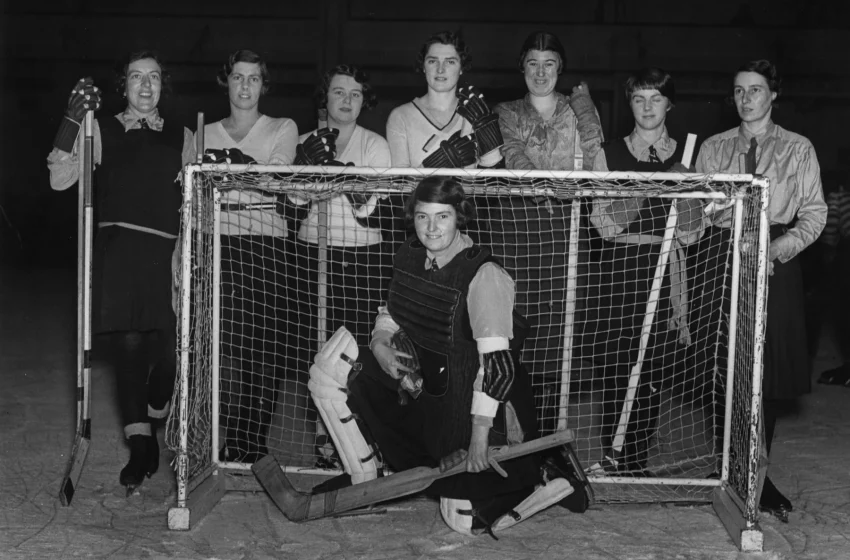Women’s Ice Hockey: Breaking Barriers and Growing the Game

Women’s Ice Hockey: Breaking Barriers and Growing the Game

Is hockey a sport for women? Some would argue with that, but the tendency towards women’s hockey is growing. The statistics of active female players are hard to underestimate. Registered female hockey players have grown from 153,665 in 2007 to 229,754 in 2022.
In the following read, you will be able to approach this sport from another perspective, taking into account the peculiarities of women’s ice hockey, the current state of this sport, the main barriers for girls to become professionals, and the most powerful players nowadays.
Historical Context of Women in Ice Hockey
The first appearance of women in the hockey form was in the Ottawa Citizen in 1891, and the first publication of such a phenomenon was a year later in Barrie, Ontario. During the same year, the first women’s ice hockey club was formed, based at the University in Kingston. Since then, people have started to hear about the existence of female players on the ice.
Due to obvious disapproval and blame for women’s hockey from mostly male communities, the first female ice hockey club was named “Love-me-Littels.” A few years later, the university team started to become more popular among other Canadian universities. However, it took almost 30 years to start organising university hockey tournaments and spread them throughout the country.
First Hockey Court Case
The beginning of the 1950s was a breakthrough for women’s equality. There’s one famous story that made a huge effort to female hockey when a little girl named Abby Hoffman pretended to be a “boy” in order to play for Toronto in the league. The league expelled her once they found out about her conspiracy. After that, her parents went to the Supreme Court and won the case.
Later, in 1966, the first female hockey team was formed in the US. However, the national tournaments didn’t happen until the creation of the first Women’s Hockey Association in 1975 and their huge impact on the sports society. Another person who influenced women’s hockey was Edmonton’s Shirley Cameron, who formed her first team and started the national championships in 1982.
Growth and Development
At the beginning of the 90s, the first woman, Manon Rheaume, played an NHL exhibition game, which made IIHF mandate that all on-ice officials be women. In 1997, the IIHF announced the World Women’s annual competitions during the non-Olympic years and the first award for the best women hockey player. Two years later, the first pro hockey league was formed in Canada, called the National Women’s Hockey League. Thus, it has experienced many changes.

Moreover, during the 1990s, international hockey for women started to spread globally, with teams emerging from China and many other countries. They were extremely competitive with North American teams and showed great results in the IIHF.
Since 2004, women’s hockey has been actively organising various camps to attract teenage girls from different countries, teach them skills, and grow their passion for the sport. Thanks to many coaches that year who decided to start active training sessions for girls and hockey leagues along with Olympic summits who were actively invested in the development of women’s hockey. For example, in 2010, the money used from this investment was put forward to create events called World Girls’ Ice Hockey Weekend and Global Girls’ Game.
Due to the goal of raising women in female-dominated sports, awareness of such a movement is increasing thanks to some newly created leagues and a series of exhibitions. Below are the most essential foundations for the awareness of female hockey among sports leagues.
NWHL
There was no professional women’s hockey league to select outside Canada (CWHL) until 2015 when the NWHL (National Women’s Hockey League) was formed in the USA. Dani Rylan was responsible for collecting the budget to initiate the league that pays out its players.
Finally, official contracts with salaries were introduced that provided female players with consistent income. In addition, players have been earning percentages from sold merch. There were only four teams in the league until April 2020, with Toronto officially announcing their commitment.

PWHPA
2019 was a serious year for women’s hockey due to the foundation of the Professional Women’s Hockey Players Association after CWHL collapsed. The goal of these associations is to bring financial stability and developed infrastructure to all players, including training programs, salaries, health insurance, and youth support.
Moreover, a huge impact on female hockey awareness was made after the invitation of players from PWHPA and NWHL to participate in the 2019 NHL All-Star Skills Competition. Women were invited to take part in the skills contest along with big NHL names. Although they did not take first place, they ended up showing excellent competition and garnered recognition for these two leagues.
Current State of the Sport
In 2021, the National Women’s Hockey League received a new name, the Premier Hockey Federation, and a new structure. Now, they doubled the salary cap to $750,000 and to $1.5 million later in 2023-24 and changed the structure of teams’ ownership.
In addition to prioritising private ownership, players were given equity stakes. Of course, there is a new system of healthcare and other benefits. Moreover, viewers can place hockey bet on the National Women’s Hockey Leagues and try their prediction skills.
PWHL
The Premier League Federation has not existed since 2023. That’s because it was sold to the Mark Wolter group and rebranded. Such action was not satisfying for players, as they needed to renegotiate their contracts and decide whether to play in a new league called PWHL (Professional Women’s Hockey League). Based on the new rules, many players from previous leagues (PHL and PWHPA) were not signed due to the smaller number of teams in the new league.

Barriers to Girls and Women’s Hockey Participation
Women’s sports journey has not been easy. It’s been experiencing numerous changes over the years, and sometimes, not in a better way. As a result, women struggle in male-dominated sports like ice hockey. Let’s briefly examine and finalise these barriers.
- The first barrier is a lack of awareness that leads to a lack of investments and attention from bigger federations. Thus, the women’s leagues are constantly reorganised or sold.
- Second, there is an unequal distribution of resources and pay. Due to the lack of sponsorship, female hockey players receive less money.
- Third, a lack of support and motivation from relatives.
- Fourth, the opportunities that ensure the growth of sport among youth are not promising. Therefore, young girls do not pay enough attention to ice hockey.
Key Factors Driving Girls and Women’s Hockey Participation
But what motivates women and girls to begin their sports journey as hockey players? What marks them stepping on the ice and competing in the male-dominated sports? Is it a desire for self-improvement or proving the quality of genders? Let’s take a look at the key factors that drive women to play this sport.
- Trying to prove their skills on the ice.
- Parental influence.
- Desire to overcome their main competitors (men).
- Promote this sport to the public.
Most Powerful Women in Hockey
As we mentioned above, the history of female participation on the ice is large. The world has seen many talented female hockey players who not only showed great results even when playing with men but also changed the betrayal of sports in general and promoted it among thousands of women across the globe. Below the read, you will find women who made a significant effort in this sport.
Kendall Coyne Schofield
Kendall is a 32-year-old American professional hockey player. She is the captain of the Minnesota Frost, USA team. Her contribution to the team is massive. She received six gold medals in the IIHF World Women’s Championships and won the gold medal in the Winter Olympics 2018. She is considered one of the most powerful ice hockey players.

Dani Rylan
She was a former ice hockey player and the founder of the National Women’s Hockey League. Her enormous contribution to women’s hokey world cannot be overstated. She was the first to create a league for women that pays out its players. Moreover, she was playing in the NCAA and was a captain of the Northeastern Huskies team.

Marie-Philip Poulin
When it comes to skills on the ice, Poulin is an excellent example. She is currently the captain of Montreal Victoire and the Canadian national team. Her effort made her team win three gold medals in the Olympics and become a four-time world Champion. Being a captained team in Canada, she guided her team to win the silver medal in the 2018 Winter Olympics and a gold medal in the 2022 Winter Olympics.

Conclusion
Women’s hockey history includes many challenges. However, today, it is wildly popular in the world and, more importantly, respected by people. The appreciation of female players in ice hockey is what women wanted the most. Thus, it has given them proper sponsorships and support for their careers. You can watch many ice hockey championships today.
Check out: South African Songs




